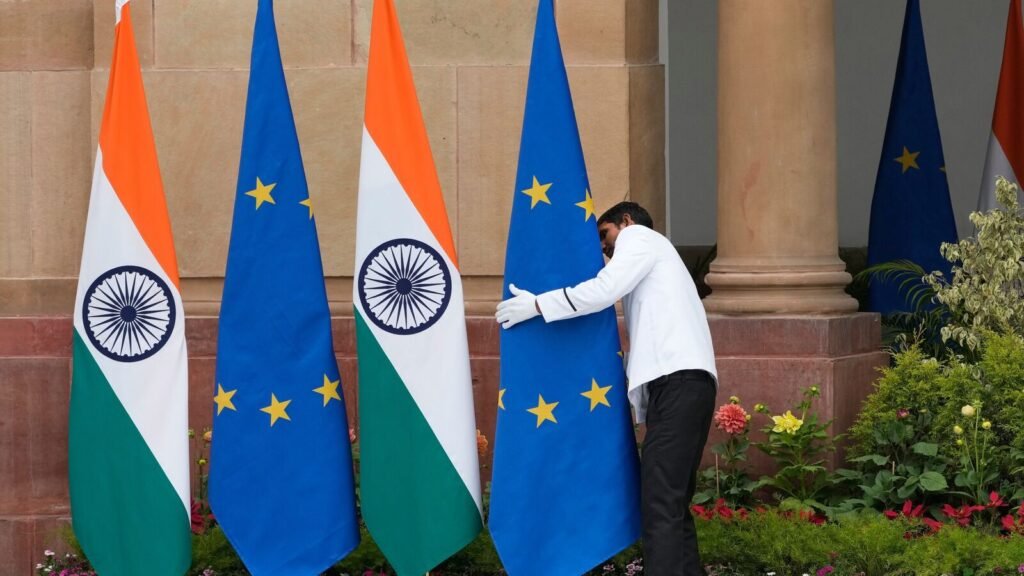By Jordbrukare India
The 13th round of negotiations for the proposed Free Trade Agreement (FTA) between India and the European Union entered its decisive phase this week in New Delhi, with both sides signalling intent to conclude a deal by the end of 2025. Yet, despite the accelerated pace, India has made clear that agriculture — and dairy in particular — will remain outside the scope of concessions.
Dairy at the Centre of India’s Trade Guardrails
Officials familiar with the discussions emphasise that while an agreement with the EU is a top priority, “sweeping concessions on agriculture and dairy are unlikely.” A senior government source reiterated that, “Agriculture and dairy will be protected. One always wants to wrap up a trade deal soon, but our view is we want a good deal; we are not working on speed.”
This position aligns with India’s consistent approach to trade policy. Recent agreements with Australia, the United Kingdom, Switzerland, and Norway all excluded dairy and sensitive farm products. The rationale is straightforward: dairy is not just another commodity in India’s trade basket, but a cornerstone of rural livelihoods, farmer incomes, and domestic nutrition. With over 80 million farming households linked to milk production, tariff liberalisation in this sector is viewed as a direct threat to farmer welfare.
EU Pressure vs. India’s Protection
Brussels has been pushing for deeper market access in agriculture and high-value dairy products, alongside reductions in India’s tariffs on automobiles and spirits. However, New Delhi’s calculus is shaped by both political economy and social equity. Dairy imports, especially from heavily subsidised EU producers, could destabilise India’s cooperative and private procurement systems, which rely on smallholder milk.
For India, protecting this sector is not a question of protectionism but of resilience. The cooperative model — epitomised by Amul — and private processors alike depend on predictable farmer engagement. Cheap imports could undercut these structures, weakening the world’s largest dairy ecosystem by volume.
“Balance Over Speed”
Commerce Minister Piyush Goyal confirmed that nearly two-thirds of the agreement’s chapters are already concluded. However, he underscored that the deal must remain “balanced, robust, fair and mutually beneficial” — and that timelines are secondary to content. EU Trade Commissioner Maroš Šefčovič echoed the sentiment, describing the FTA as a potential “win-win” that balances producer and consumer interests on both sides.
The phrase guiding the talks — “balance over speed” — reflects India’s determination not to sacrifice dairy and agriculture at the altar of market access in other sectors.
The Wider Context
The urgency to conclude the deal is amplified by global headwinds. The United States has imposed a 50% tariff on most Indian goods, even as it lowered duties on nearly all EU exports to 15%. This divergence has reinforced India’s need to diversify markets and secure preferential access to the 27-nation bloc, its largest trading partner, accounting for 12.2% of India’s total trade.
Against this backdrop, the India–EU FTA is seen as a strategic hedge: expanding opportunities for textiles, pharmaceuticals, engineering and services, while insulating sensitive farm and dairy products from external shocks.
Outlook
The 14th round of talks is scheduled for October in Brussels, where negotiators are expected to tackle the final sticking points. With political will converging at the highest levels, a deal by year-end remains plausible. Yet, the contours of that agreement are already visible: ambitious in industry and services, but uncompromising on dairy.
For India’s farmers and processors, the message is unambiguous. Dairy remains a red line — and in these negotiations, it is not just about trade but about the social contract between policy and the millions who depend on milk for their livelihoods.
